Historic Los Angeles Hilltops
Every summer for the past several, Scott and I have sat down
across a dinner table with a large pile of photographs. Most of
the photos he has shown me have been taken in Southern California
in April, either before or after his annual trip to the National
Association of Broadcasters' annual convention (now the world's
second-largest trade show). Usually at least a few have been of
the sort to make me insanely jealous of what he was able to see
that I never will. His response has always been, “Why don't
you come? It's easy to get a free pass to the show floor.”
Finally, this year, I gave in and made plans to spend a long April
weekend in the desert.
We arrived separately at Las Vegas–McCarran International
Airport (KLAS for the aviation geeks), and after some fooling with
baggage we picked up our rental car and booked it down I-15 (or
“the 15” if you're from SoCal). We stopped in Baker
to admire the World's Tallest Thermometer-like Object (and get
fantastic fresh strawberry shakes at the Mad Greek), had a late
dinner in Apple Valley, and finally checked in to our hotel in
Burbank (a rather unpleasant Quality Inn conveniently located
next to railroad tracks serving the busy Metrolink Ventura and
Antelope Valley lines).
Friday morning dawned, and we met our first of this day's four
traveling companions. Dennis Gibson had stayed in the same hotel
as we had. He's a weights-and-measures inspector in Santa Barbara
County; like us, he is a facilities geek; he's also been involved
in the SoCal radio history community. We then drove to the
Glendale home of consulting engineer Burt Weiner, where Burt and
Mike Tosch joined our party, and headed down local streets (under
Burt's expert guidance) to the new CBS Radio studios on Wilshire
Boulevard for an early appointment with CBS AM chief Paul
Sakrison. After a tour of the new KNX (1070) and KFWB (980)
studios, we drove out to the three-tower transmitter site of KLAC
(570), the center tower of which is also used by KFWB.
At KLAC we were met by Rick Lucas, a radio-geek friend of
Scott's from Rochester, by long-time Los Angeles engineer Marvin
Collins, and by Clear Channel's John Paoli. After a good look
around at both stations' transmitter buildings, Mike Tosch then
took us up to his 1540 site, just a mile or two north of KLAC,
which was upgraded last year to 37 kW nights by building six new
towers (and later knocking down the three old towers).
From 1540 we headed back up to Glendale to meet KROQ-FM's Fred
Holub for our tour of Verdugo Peak. With some creative seating,
we were able to squeeze all seven of us into Rick's rental 4x4 and
headed up to the top. We spent at least an hour there, admiring
the unusual site (about which more later).
On the way down from Verdugo, we heard from Clear Channel's
Mike Callaghan, who had some free time and was able to show us the
Montecito Heights facility that was formerly home to the station
on 1150, the erstwhile KRKD and KFSG. The building is still owned
by the International Church of the Foursquare Gospel (about which
more later), and Clear Channel still holds a lease on the
towers—which may come in handy soon. Spanish Broadcasting's
KXOL-FM (96.3), which was also once KFSG, still has a backup
transmitter there as well.
Finally, we returned to Glendale to have dinner, dropped Burt
and Dennis off, and booked it east on the 210 and north on the 15
to our first Nevada hotel, located in Primm on the
California-Nevada line, the less said about which the better. We
arrived there just after midnight and crashed.
Some station history
Normally, I would put the station history bits in photo
captions related to each station. However, the nature and history
of the sites we visited require some additional, long-form
explanation.
We'll start, for reasons which will become clear, with KIEV
(1500 Culver City). This construction permit is ultimately the
descendant of a graveyarder in Burbank, KBLA (1490). The station
started on October 10, 1951 (after the failure of an earlier
station on that channel), and spent the next decade-and-change
doing what graveyarders in small parts of big markets do. In the
early 1960s, the owners decided to make a bold move, to 1500 kHz,
with greatly increased power. Unfortunately for them, there
aren't many good places to build a six-tower AM directional array
in Burbank. So, like many of L.A.'s second-tier AMs, they ended
up building the station on a rocky hilltop, the only sort of land
cheaply available in the Los Angeles basin. On that hilltop, a
2,641-foot ridge known today as Verdugo Peak, they built six
“flagpole”-style monopoles (which, although relatively
short, still had to be painted and lit due to the proximity of
Burbank Airport). KBLA in those days had a hit-radio format, but
it was not particularly successful, and in June of 1967 it
switched to country as KBBQ. This didn't work too well either,
and the station went back to hits as KROQ on Labor Day weekend of
1972.
Meanwhile, the Pasadena Presbyterian Church had built an FM
companion to its KPPC (1240 Pasadena). Little KPPC had only 100
watts, and was limited to operating Sundays and Wednesday nights;
KPPC-FM came on the air as a full-time, commercial class-B FM on
106.7 in November of 1962, with a transmitter on the church
building in downtown Pasadena, later moving to Flint Peak in
Glendale. The church rapidly ran out of programming to fill
KPPC-FM's program days, and while still operating from the
basement of the church, it became one of the nation's first
progressive rockers. Pasadena Presbyterian eventually sold KPPC
and KPPC-FM to an outfit called National Science Network, which
ran drug advertisements on an FM subcarrier, and didn't care how
the stations were programmed at all. NSN ran into what today
would be called “compliance issues” at the FCC, and
was forced to sell its stations. The AM went to an outfit called
“Universal Broadcasting”, but KPPC-FM was sold to the
owners of KROQ and on closing promptly became KROQ-FM, which it
still is today.
During the 1970s, KROQ and KROQ-FM lost buckets of money, and
went silent a number of times. At some point, KROQ-FM moved from
Flint Peak to Verdugo Peak, presumably as an economy measure. The
AM 1500 signal never worked usefully; with nearby stations to
protect on 1490 and 1510, the directional pattern was awful, and
so was the ground conductivity atop Verdugo. The station even
built a large cistern, and took to irrigating the ground field
with the hope that it would improve the AM signal. KROQ-FM began
its highly-successful run as an album rocker in 1978, when it was
one of the first stations to play “new wave”. The AM
limped along, changed calls to KRCK in 1985, and went silent.
KRCK handed in its license on September 19, 1986, but requested
that the Commission renew a construction permit for 50 kW-D, 14
kW-N from a different site. The renewal was granted in December
of 1988, and the station has persisted, unbuilt, by additional CP
extensions and amendments ever since. The current owners, Ed
Stolz's Royce International Broadcasting, have only recently filed
another amendment to the CP (now under the callsign KIEV and with
a new community of license), which may some day actually be
built. KROQ-FM, meanwhile, became one of Infinity Broadcasting's
first stations and has continued a successful run as a rock outlet
to the present day under a succession of corporate names; it's
currently owned by CBS.
KTLK (1150) and KXOL-FM (96.3) also trace their history to a
church. KTLK is the descendant of two stations which formerly
shared time, KFSG and KRKD. KFSG was started by the International
Church of the Foursquare Gospel, a pentecostalist church led by
the flamboyant Aimee Semple McPherson. McPherson is said to be
the first woman to have received a broadcasting license, in
February, 1924; KFSG operated from a “T” antenna
suspended between two self-supporting towers atop the church's
Angelus Temple, 1100 Glendale Boulevard, in the Echo Park section
of Los Angeles. The station that would become KRKD began in 1927
in Inglewood, but moved to its own flat-top antenna atop the
Spring Arcade on Broadway in downtown L.A. KRKD-FM took to the
air in 1948, with a new tower at 1050 Montecito Drive—not
far from today's KLAC/KFWB and KMPC sites. I haven't been able to
find any information that would say precisely when 1150 moved to
Montecito, but it was definitely there by 1961, when Foursquare
Gospel bought KRKD AM and FM and combined the 1150 operations
under KRKD's license, and was probably there when the tower was
built in 1948. By that time, KRKD had fairly-standard class-II
facilities of 5 kW-D, 1 kW-N ND-U; the two additional towers that
allowed 5-kW night service were not built until 1980.
In the late 1960s, KRKD-FM became KFSG, a callsign which it
kept, under church ownership, until May 9, 2001, when it was sold
to Spanish Broadcasting Systems and became “Sol”
KXOL-FM. The church had already sold the AM in the early 1970s,
although they kept ownership of the transmitter site (and still
own it today). The new owners of the AM changed the callsign from
KRKD to KIIS, which was not (contrary to common belief) meant to
suggest “Kiss”, but rather the station's dial
position, “115” on old analog radios.
Another thread of this story starts in 1948, when KFMV (94.7)
took to the air. KFMV was a stand-alone station, owned by Union
Broadcasting Corp. At the time, KFWB (980) was still owned by the
Warner Brothers studio, but a couple of years later, in 1950,
long-time KFWB general manager Harry Maizlish bought the station
from Jack Warner. By late 1951, Maizlish had control of Union
Broadcasting as well, and with it KFMV; in 1952 KFMV became
KFWB-FM. KFWB was sold in 1956, but Maizlish kept the FM,
renaming it KRHM after himself and his wife, Rose. Metromedia's
KLAC-FM (102.7) signed on in March of 1961. In 1967, the stations
swapped facilities, with KLAC-FM becoming KMET at the same time,
soon developing into an album-rock powerhouse. KMET lasted until
Valentine's Day, 1987, when it became new age “The
Wave”, first as KTMV-FM and later that year under its
current callsign, KTWV. Two years later, Westinghouse bought
Legacy Communications, which then owned all of the former
Metromedia FMs, bringing it under common “Group W”
ownership with KFWB. Meanwhile, KRHM became automated top-40 KKDJ
in April, 1971; this lasted until 1975. The station's owners at
the time, Pacific and Southern Company, merged into Combined
Communications in 1975; Combined bought (or perhaps had already
owned, my references are unclear) KIIS and flipped 102.7 to
KIIS-FM with an on-air “marriage”.
Long-time readers of the FCC files may recognize the name
“Pacific and Southern Company” as the name under which
Gannett operates its broadcast properties (much as The New
York Times had “Interstate Broadcasting
Company”). Gannett didn't acquire Combined, and thus
P&S, until 1978. It was about that time that KIIS dropped the
simulcast with KIIS-FM and struck out on its own with religious
programming as KPRZ. In 1984, the station was briefly used to
warehouse the KUSA calls, a Gannett favorite, in advance of KBTV
(9 Denver) becoming KUSA-TV on March 19. (In addition to being
used on TV in Denver, the calls were also parked on the former KSD
[550 St. Louis] for nine years.) KUSA (1150 Los Angeles) returned
to KPRZ on that date, and later in 1984 went back to KIIS,
reflecting the return of the simulcast with KIIS-FM.
Gannett would eventually sell its radio properties; KIIS and
KIIS-FM ended up with Jacor, one of the ancestors of today's Clear
Channel. KIIS-FM has continued its highly successful CHR format
to this day, and thanks to a foresightful Gannett lawyer, Clear
Channel today owns a federal trademark for “Kiss”
brand radio stations. The AM continued to simulcast the FM until
1997, when it switched to a simulcast of all-sports XETRA (690
Tijuana) under the callsign KXTA. The simulcast was soon broken,
as Los Angeles and San Diego are separate markets for sports
rights. KXTA acquired the rights to L.A. Dodgers baseball games,
under the condition that the station had to be upgraded to 50 kW
full-time. KXTA moved from the Montecito Heights site it had
called home for at least forty years to a diplex with KTNQ (1020
Los Angeles) in record time, and was on the air with the new 50-kW
signal in time for the first pitch. Meanwhile, Clear Channel kept
the lease up at Montecito; although much of the old 1150 equipment
has now been removed, the towers still stand.
Now to follow up on the KXOL-FM side of the story: When Spanish
bought KFSG from the Church of the Foursquare Gospel, one of the
very first things they needed to do was to move the station to a
better transmitter site. Montecito Heights, although an excellent
transmitter site in 1948 with clear line-of-sight to downtown Los
Angeles and suburbs to the south and east, is shadowed from the
fast-growing San Fernando Valley. In order to serve this area,
KXOL-FM would have to move north and west, but the station also
had serious spacing issues in those directions, necessitating a
directional antenna. Accepting this restriction, Spanish
Broadcasting signed a lease on the Flint Peak tower owned by Emmis
Communications. (Montecito remained, and remains, a licensed
backup location.) The Flint Peak lease, however, contained a
non-competition clause, and when Spanish changed KXOL-FM's format
to a Spanish-language urban format (known in the trade as
“Hurban”), Emmis enforced their non-compete and
evicted 96.3 from the tower. In need of an emergency transmitter
site, Spanish looked to the next ridge over in Glendale, and found
that it was being used as an FM site by their 10% shareholder,
CBS. That site was, of course, Verdugo Peak, and KXOL-FM's
engineers quickly obtained Special Temporary Authority to attach
their antenna to one of the old 1500 monopoles. That arrangement
is in the process of being regularized.
The station now known as KMPC adopted that callsign in 2000.
The calls had previously been on a little AM in Abilene, Texas,
but for many years before that, KMPC was what is now ESPN Radio
outlet KSPN (710 Los Angeles), owned by Gene Autry's Golden West
Broadcasting. (It goes to show that you can't keep a good
L.A. callsign down: the KSPN callsign was previously on 1110 in
Pasadena, now KDIS but for years KRLA. The current KRLA is the
former KIEV in Glendale. The current KIEV is, as mentioned
previously, the former KROQ, which was originally KBLA. The
current KBLA was previously KDAY, and that callsign is now on a
class-A FM in Redondo Beach that was briefly KFSG and before that
KFOX, which in turn is now on the 1650 in Torrance, about which an
entire article could be written.)
Getting back to the current KMPC: it was originally KPOL (a
heritage L.A. callsign that really is gone—it's now on a
religious LPFM in Oregon) and signed on in 1953. Originally it
operated with 10 kW-D, DA-D, with a two-tower array; by the time
Marvin Collins joined the station in 1957, a third tower had been
built to allow full-time operation with 10 kW-U DA-2. In the
early 1960s, KPOL was able to increase day power to 50 kW (Marv
recalls helping to install the new GE transmitter) while retaining
the existing tower configuration. By 1958, KPOL-FM was on the air
at 93.9 MHz. Formatically, KPOL started out playing polkas, and
spent many years as one of L.A.'s numerous Beautiful Music
stations. In 1978, KPOL-FM became KZLA, and a year later the AM
followed suit. In 1984, the AM was sold off to the newly-formed
Spanish Broadcasting System and became KSKQ (“La Super
K-Q”, as on New York-market sister station WSKQ [620 Newark,
N.J.]). It became KXED in 1992, and KXMG in 1996, still under SBS
ownership, before becoming KCTD in a deal that sent it and 620
Newark to the Chicago-based One-on-One Sports network in 1997.
(KZLA-FM, meanwhile, kept its country format through a succession
of owners and is now an Emmis property.) One-on-One merged with
The Sporting News newspaper and came under the
control of Microsoft co-founder Paul Allen in 2001.
Revised 2008-10-01 to reflect new information about the
early history of 94.7.
References
The Los Angeles market is a bit of uncharted territory for me.
Although I had been there twice before, and read a bit about it,
I didn't know a lot about the history (and almost nothing of what
is written above). I used the following references, among others,
in reconstructing this history:
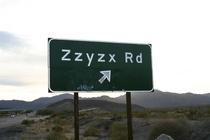 |
| I-15 exit 239 |
|
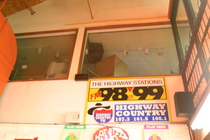 |
| Highway Stations studios |
|
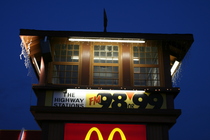 |
| Highway Stations signage |
|
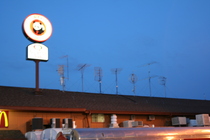 |
| Forest o' STLs |
|
 |
| CBS Radio signs |
|
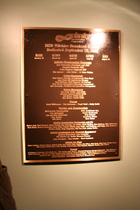 |
| Dedication plaque |
|
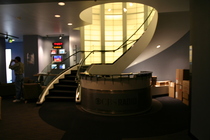 |
| CBS Radio lobby |
|
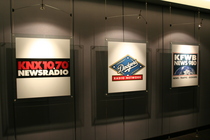 |
| CBS AM signage |
|
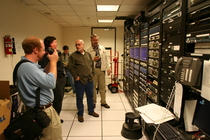 |
| CBS AM tech center |
|
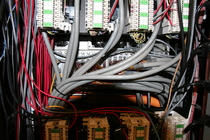 |
| SAS Rubicon wiring |
|
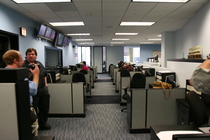 |
| KFWB newsroom |
|
 |
| KFWB editor's desk |
|
 |
| KFWB studio 4 |
|
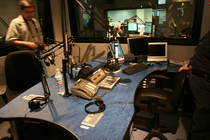 |
| KFWB talk studio |
|
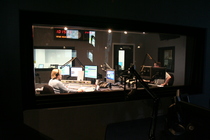 |
| KFWB news anchors at work |
|
 |
| KFWB booth studio |
|
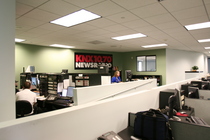 |
| KNX editor's desk |
|
 |
| KNX newsroom |
|
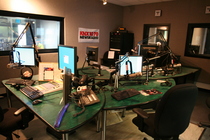 |
| KNX main air studio |
|
 |
| KNX main studio |
|
 |
| Paul's vanity plate |
|
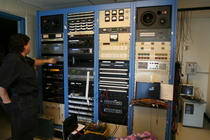 |
| KFWB racks |
|
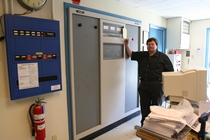 |
| KFWB transmitter |
|
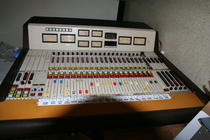 |
| Old KFWB board |
|
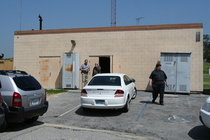 |
| KFWB tx bldg |
|
 |
| KLAC tx bldg |
|
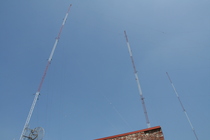 |
| 570/980 towers |
|
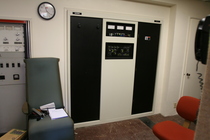 |
| KLAC main tx |
|
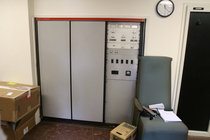 |
| KLAC backup tx |
|
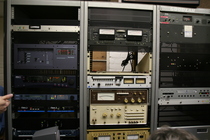 |
| KLAC racks |
|
 |
| Old KFWB sign |
|
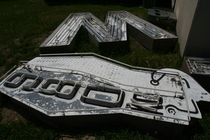 |
| Old KFWB sign |
|
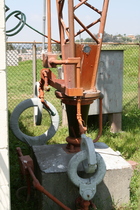 |
| KFWB/KLAC tower |
|
 |
| KLAC north tower |
|
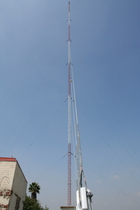 |
| KLAC south tower |
|
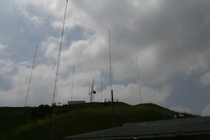 |
| KMPC towers |
|
 |
| KMPC tower base |
|
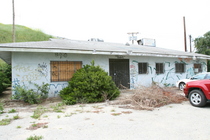 |
| 1540 tx bldg |
|
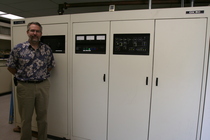 |
| KMPC main tx |
|
 |
| KMPC backup tx and racks |
|
 |
| KMPC view |
|
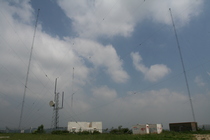 |
| 1540 towers and buildings |
|
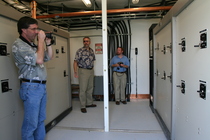 |
| 1540 phasors |
|
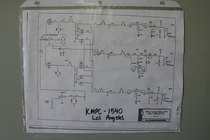 |
| Old 1540 phasor |
|
 |
| Verdugo Peak |
|
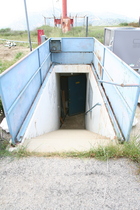 |
| Stairs to KROQ |
|
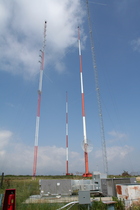 |
| KROQ-FM tower |
|
 |
| KXOL-FM tower |
|
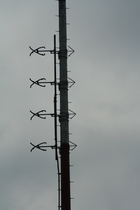 |
| KXOL-FM antenna |
|
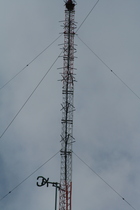 |
| KROQ-FM, KRTH-FM antennas |
|
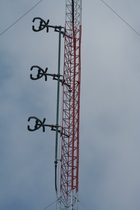 |
| KROQ-FM backup |
|
 |
| 1500 base |
|
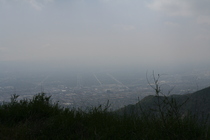 |
| Burbank |
|
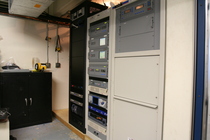 |
| KROQ tx #1 |
|
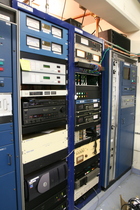 |
| KROQ txen 2 and 3 |
|
 |
| KRTH-FM backup tx |
|
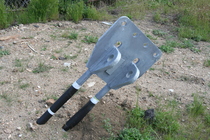 |
| Big guy anchor |
|
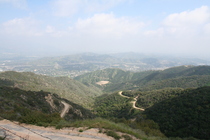 |
| Verdugo Peak access road |
|
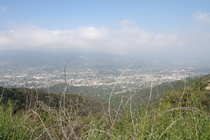 |
| Glendale |
|
 |
| Old KRKD-A/F tx bldg |
|
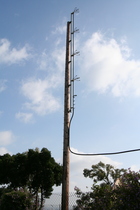 |
| Montecito FM antenna |
|
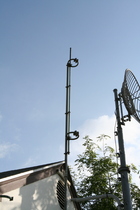 |
| Montecito FM antenna |
|
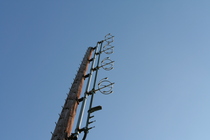 |
| Montecito FM antenna |
|
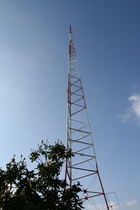 |
| Montecito center tower |
|
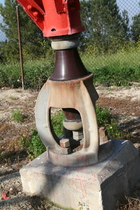 |
| 1150 base insulator |
|
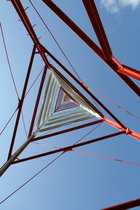 |
| Looking up |
|
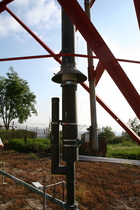 |
| KRKD-FM isocoupler |
|
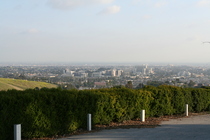 |
| Montecito view |
|
Copyright 2006 Garrett Wollman. All rights reserved.



































































